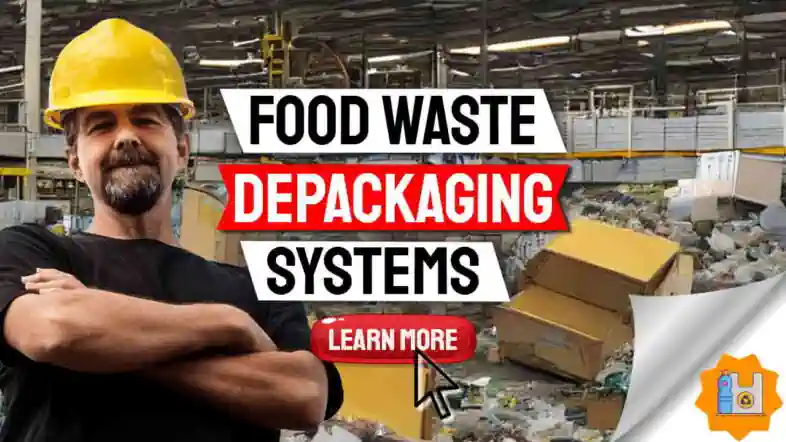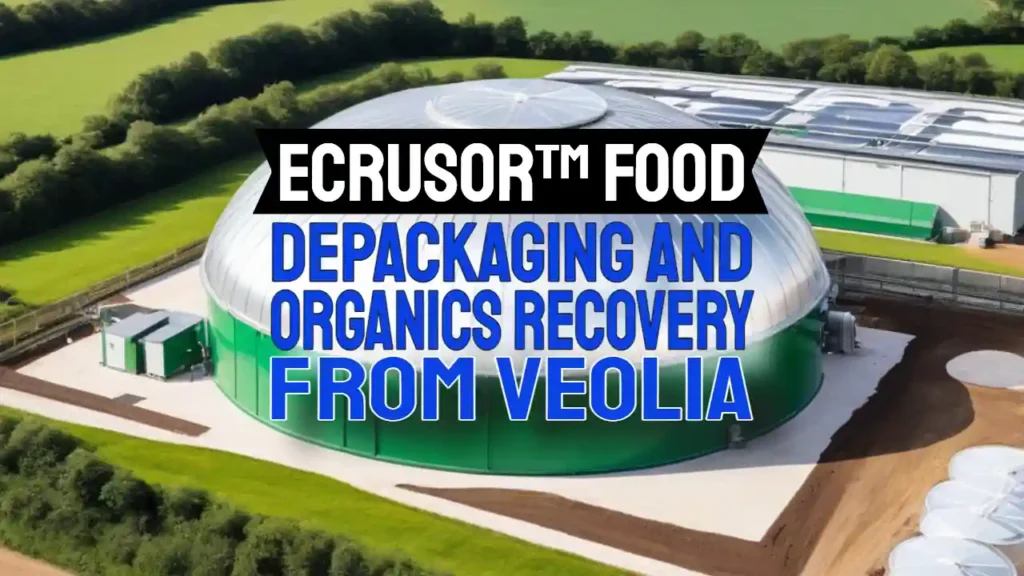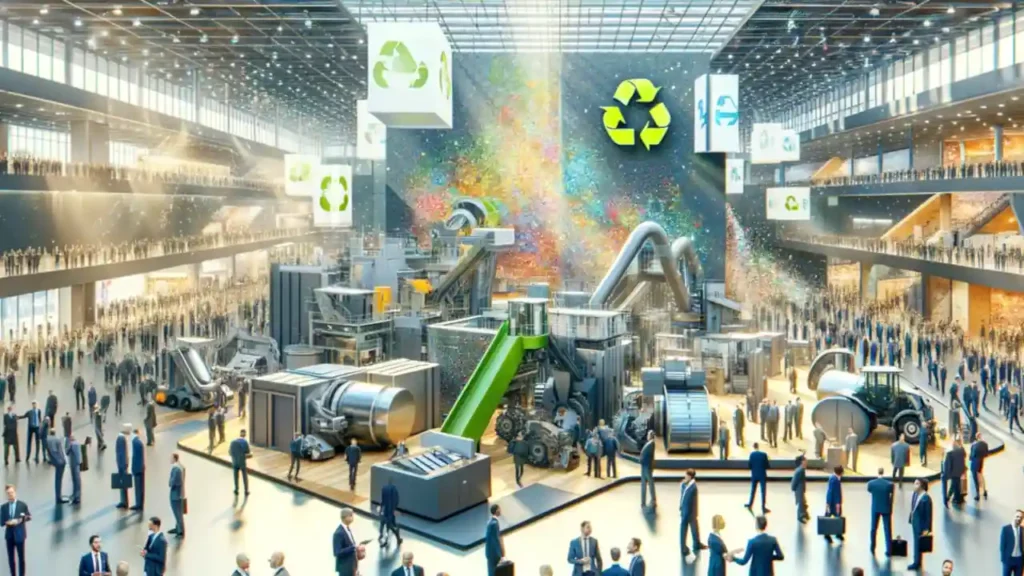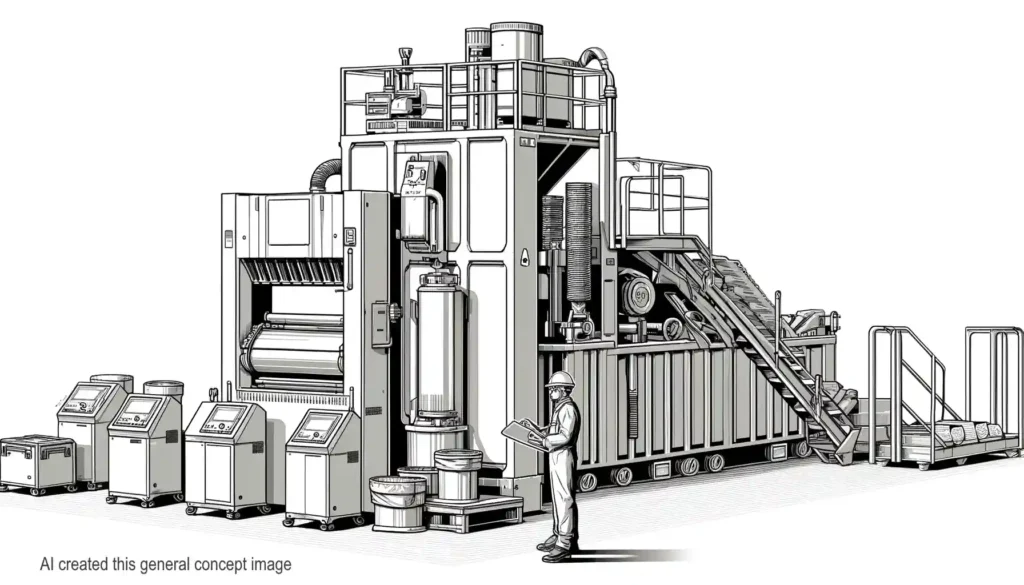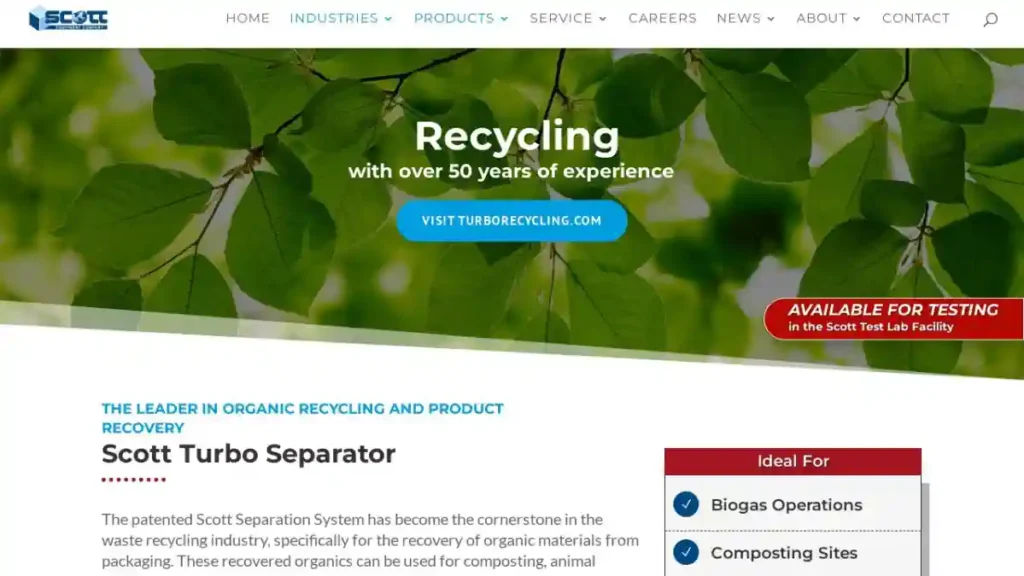E-waste is a growing problem. Old electronics pile up, and many contain valuable metals. Most people don’t know how to recover these metals efficiently.
One way to tackle this is through advanced depackaging technology. The ReclaimMaster System by Franklin Miller Inc. helps separate packaging from contents, making metal recovery faster and easier.
This article will explore various methods for efficient metal recovery. You will learn about key features of modern systems and their applications in e-waste management.
Stay with us… it’s worth it!
Key Takeaways
- Advanced depackaging tools like the ReclaimMaster can process up to 20 tons per hour. They separate packaging from contents, making metal recovery faster and easier.
- Bioleaching uses microbes to extract metals from waste in an eco-friendly way. This method offers a cleaner alternative to traditional pyrometallurgy and hydrometallurgy.
- Automation systems, using AI-powered sorting tech, make recycling more accurate by identifying waste with 99% precision. These systems cut down errors and boost efficiency.
- Modern techniques focus on energy efficiency with power consumption ranging from 30-200 kW. Variable speed drives reduce costs by managing power smarter.
- Treating e-waste like circuit boards and lithium-ion batteries helps recover precious metals such as gold, silver, lithium, and cobalt—reducing environmental impact while boosting profitability.
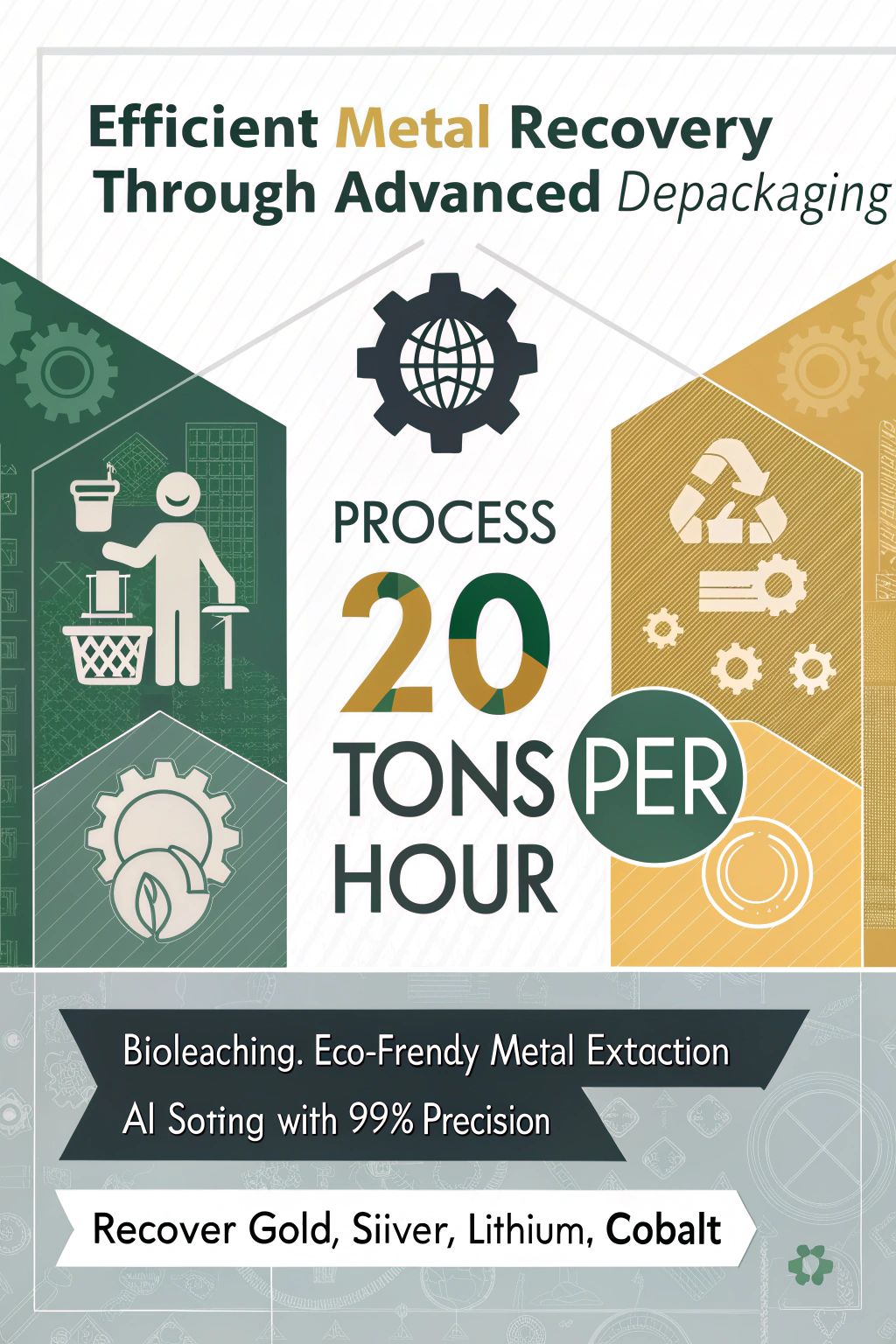
Overview of Advanced Depackaging Technologies

Advanced depackaging technologies are revolutionising how we recover metals from waste products. These methods increase efficiency, reduce waste, and save costs in metal recovery processes….
ReclaimMaster System
ReclaimMaster separates packaging materials from organic contents effortlessly. This system processes up to 20 tons of material per hour. It works on various materials, including plastics, paper, and metal containers.
Designed for low maintenance, ReclaimMaster has minimal moving parts. The advanced technology ensures low power consumption, making it energy-efficient. Franklin Miller Inc.’s creation stands as a solid tool in sustainable waste management.
Effective depackaging is key to resource recovery, says an industry expert.
Thus, ReclaimMaster helps in reducing landfill waste and promoting recycling facilities’ efficiency.
Bioleaching Approaches
Transitioning from the ReclaimMaster System, it’s time to explore bioleaching methods. This process can optimise variables like pH, pulp density, and temperature for efficient metal recovery.
Microorganisms such as *Acidithiobacillus ferrooxidans* and *Aspergillus niger* play key roles in bioleaching.
Traditional routes like pyrometallurgy and hydrometallurgy often harm the environment. In contrast, bioleaching offers a cleaner approach. Response Surface Methodology (RSM) is used here to fine-tune processes with fewer experiments.
This technique has shown promise in reclaiming metals from e-waste like circuit boards and lithium-ion batteries.
Hydrometallurgical Methods
Hydrometallurgical methods are key for extracting metals. These processes use water-based solutions to separate metals from waste. Key steps include precipitation, cementation, and solvent extraction.
Selective leaching targets rare-earth elements (REEs). This method helps in recycling valuable materials.
Sustainable recovery often uses hydrometallurgy or biohydrometallurgy. For example, the Bayer process produces 0.8–1.5 tons of red mud per ton of alumina extracted—highlighting the need for efficient waste management and reduction techniques…
Leading to modern depackaging systems!
Key Features of Modern Depackaging Systems
Modern depackaging systems offer many benefits that make metal recovery more efficient. They use advanced technologies to increase productivity and cut costs… making waste management a lot easier and greener.
Enhanced Metal Recovery Rates
Advanced recycling technologies boost metal recovery rates. Chemical leaching, for example, extracts valuable metals from waste electronic and electrical equipment (WEEE). Utilising novel methods like bio-metallurgy enhances these rates further.
Cryo-milling also improves the efficiency of this process.
Bioleaching is another effective approach. It uses bacteria to dissolve metals from solid waste at low temperatures. This method is both efficient and eco-friendly. Combined with cryo-milling, it maximises metal recovery while minimising environmental impact.
Automation and Control Systems
Automation and control systems transform metal recovery. AI-powered sorting tech can identify and separate waste with 99% accuracy. These smart systems cut down on errors and boost efficiency.
IoT integration makes collection smarter. With smart bin technologies, waste management becomes more effective. The automation reduces labour costs while increasing the speed of processing recyclables.
Energy-efficient AI algorithms are the next big trend. They save energy while enhancing operational efficiency in recycling facilities. Explore their impact on e-waste management!
Energy Efficiency
Modern depackaging systems focus on energy efficiency. Power consumption ranges from 30-200 kW. Variable speed drives and energy recovery systems cut down energy use. Automated power management helps save costs, keeping them between $5-15 per ton processed.
Standby modes in these systems also reduce energy waste when not in full operation. This helps lower both costs and environmental impact. These features make advanced metal recovery not just effective but also sustainable.
Applications in E-Waste Management
Advanced depackaging can help recover metals from electronic waste, making the process more efficient… Learn more about how this works!
Recovery of Precious Metals from Circuit Boards
Circuit boards contain valuable metals like gold, silver, and platinum. These precious metals make up about 0.1% to 0.5% of the weight of e-waste.
Traditional methods for metal recovery include pyrometallurgical and hydrometallurgical processes. Pyrometallurgy involves high temperatures to melt metals, while hydrometallurgy uses liquid chemicals to dissolve them.
Recently, bioleaching has emerged as a promising method that uses microorganisms to extract these metals efficiently.
…
Next: Extraction of Metals from Lithium-Ion Batteries
Extraction of Metals from Lithium-Ion Batteries
Efficient metal recovery starts with hydrometallurgical techniques. These methods use acid solutions to leach valuable metals, such as lithium and cobalt, from battery waste. Think of it like dissolving sugar in water—metals dissolve and can be separated easily.
Pyrometallurgical processes boost extraction by melting the materials at high temperatures. This technique separates metals based on their melting points. It’s energy-intensive but effective for extracting nickel and cobalt, which are essential for making new batteries.
Biotechnology offers eco-friendly options too. Special microbes break down the waste to extract metals without harmful chemicals or massive heat use. These microbial activities reduce environmental impact while recovering precious resources.
Using biotechnological approaches helps us minimise our environmental footprint, says Dr Jane Smith, an expert in e-waste management.
Each method has its strengths—be it simplicity or sustainability—making them vital tools for today’s advanced depackaging systems in electronic waste recycling centres.
Treatment of Waste LCDs
Treating waste LCDs involves a combined pyrolysis and acid immersion process. First, the waste LCDs go through pyrolysis. In this step, high heat breaks down materials without oxygen.
This separates metals from other components.
After pyrolysis, the materials go into an acid bath. The acids dissolve the metals left on the screens. This method is both efficient and environmentally friendly for metal recovery.
Pyrometallurgy, hydrometallurgy, and biometallurgy often follow to recover precious metals fully… reducing environmental harm while managing e-wastes effectively!
Benefits of Advanced Depackaging for Metal Recovery
Advanced depackaging systems bring many benefits to metal recovery. These technologies help reduce waste and conserve resources, making them both eco-friendly and cost-effective.
Read more about how these benefits transform metal recovery…
Environmental Impact Reduction
Using advanced depackaging technologies can reduce landfill waste significantly. This process lowers greenhouse gas emissions by stopping organics from decomposing in landfills, which releases methane—a potent greenhouse gas.
Recycling organic materials enhances soil health. By keeping these materials out of landfills, we help the environment and comply with strict regulations. Better metal recovery means less mining, reducing the environmental damage caused by extraction processes.
Cost-Effectiveness
Reducing the environmental impact also means saving money. Advanced depackaging systems do just that. Enhanced metal recovery leads to huge cost savings. This is because less waste goes to landfills, which cuts down on methane emissions and landfill costs.
Investing in these technologies opens new revenue opportunities too. By recovering valuable metals from e-waste, companies can sell these resources rather than paying for disposal.
Moreover, complying with global e-waste regulations becomes easier and cheaper in the long run with efficient systems in place.
Automated control systems further boost efficiency by reducing labour costs and human error. Energy-efficient processes lower operational expenses as well, making advanced depackaging an eco-friendly and smart business move!
Compliance with Global E-Waste Regulations
Compliance with global e-waste regulations ensures safe and proper disposal of electronic waste. For instance, the EU’s Waste Electrical and Electronic Equipment (WEEE) Directive sets clear rules for recycling e-waste.
These laws ensure that harmful materials do not contaminate the environment.
Bangladesh struggles with inadequate e-waste policies. Advanced depackaging technologies, like Bioleaching Approaches, help to align practices with international standards. This reduces environmental impact and increases metal recovery profitability through methods like Hydrometallurgical Methods.
Cost-Effectiveness and Maximising ROI through Efficient Metal Recovery
Advanced depackaging technologies offer great benefits for metal recovery. Equipment like the ReclaimMaster System and bioleaching methods can help reduce labour-intensive tasks. These technologies extract valuable metals with high efficiency, cutting down on waste disposal costs.
The automated systems make the process smoother and faster, freeing up human resources for other tasks.
Investing in advanced depackaging equipment can show results quickly. In many cases, companies see a return on investment (ROI) within just two years. This quick ROI is due to increased metal recovery rates and lowered operational costs.
Improved compost quality also boosts profits by reducing contaminants in organic waste streams. Efficient use of energy in these systems further supports cost-saving measures, making them an attractive option for businesses focusing on environmental sustainability.
Challenges and Future Perspectives
We explore how to overcome technological limits and scale up advanced depackaging for industrial use… read on to find out more!
Addressing Technological Limitations
High capital costs make mechanical processes tough to scale. Advanced depackaging systems are expensive, which can be a big barrier for many entities. Toxic emissions also pose a problem with chemical methods like hydrometallurgical processes.
Hybrid techniques offer promise by linking biological and chemical steps. Bioleaching uses bacteria to extract metals without harsh chemicals. But these solutions require careful handling and fine-tuning.
The challenge is significant, but solving it opens doors.
### – Scaling Up for Industrial Applications
Scaling Up for Industrial Applications
– Addressing Technological Limitations
Bioleaching faces challenges like slow processing times. To optimise this, researchers use new green solvents for faster metal recovery. Lab studies suggest altering microbial communities can help.
These changes might speed up the bioleaching process.
Scaling technologies from lab to industry is complex yet essential. Start-ups test small-scale models first. If successful, they increase size for industrial applications. New systems must handle large volumes of materials efficiently and meet environmental standards.
Government officials play a key role in supporting this scale-up through funding and policy support. Waste management professionals work with engineers to integrate these advanced depackaging methods into existing recycling facilities seamlessly…
ensuring smooth operations without downtime.
Integrating innovative solutions like hydrometallurgical methods—alongside traditional approaches—can further enhance recovery rates while reducing costs. This integration aligns with circular economy goals, promoting sustainable practices across sectors involved in e-waste recycling and beyond.
Integration with Circular Economy Models
Integrating advanced depackaging with circular economy models can boost sustainability. Formal integration within the SDGs helps expand these efforts globally. Shared standards and metrics are crucial for success.
Circular economy enhances recycling processes. It focuses on reclaiming metals from waste like lithium-ion batteries and circuit boards. This method reduces waste-to-landfill rates while meeting global e-waste regulations.
Conclusion
Efficient metal recovery is possible with advanced depackaging. Technologies like the ReclaimMaster and various hydrometallurgical methods make this process easier. These systems recover more metal, save energy, and lower costs.
They play a key role in managing electronic waste, helping to protect our environment while meeting global regulations. Adopting these technologies can lead to a greener, more cost-effective future for waste management.
For more detailed insights on enhancing your returns through efficient metal recovery, read our guide on cost-effective depackaging strategies to maximise ROI.
FAQs
1. What is advanced depackaging in the context of metal recovery?
Advanced depackaging involves separating recyclable materials from waste packaging to recover metals efficiently. This process helps divert waste from landfill sites and supports environmental protection.
2. How does advanced depackaging benefit the recycling industry?
It enhances the efficiency of material recovery facilities by ensuring more recyclable waste, such as metals, is extracted from mixed waste streams like municipal solid waste (MSW) and electronic and electrical waste.
3. Can advanced depackaging handle different types of wastes?
Yes, it can manage various kinds of refuse including food scraps, clinical waste, garden rubbish, and even industrial wastewater treatment residues—facilitating comprehensive recycling efforts.
4. Is there a role for technology in advanced depackaging?
Absolutely! Techniques like XRF analysis and atomic absorption spectrophotometry are pivotal in identifying metal content within recycled materials. These methods ensure precise sorting and high-quality recovered metals.
5. How does this process contribute to a sustainable future?
By reducing landfill dependency through efficient metal recovery, it promotes reuse of resources—turning potential rubbish into valuable commodities—and aids in creating refuse derived fuel for energy production.
6. Are there any specific applications where this method excels?
Indeed! Advanced depackaging is particularly effective with complex items such as tetra paks or lithium-ion batteries found in distribution centres or warehouses—maximising both economic value and environmental benefits through meticulous shredding processes.
References
- https://www.franklinmiller.com/product/reclaimmaster
- https://pmc.ncbi.nlm.nih.gov/articles/PMC10404936/
- https://eprints.gla.ac.uk/225875/2/225875.pdf
- https://www.mdpi.com/2075-163X/14/6/587
- https://pubs.rsc.org/en/content/articlelanding/2023/su/d3su00034f
- https://elegantlyorganic.co.uk/top-technologies-in-food-waste-separation/
- https://elegantlyorganic.co.uk/depackaging-equipment-for-the-food-industry/
- https://www.researchgate.net/publication/272151005_Recovery_of_precious_metals_from_scrap_printed_circuit_boards_through_pyrolysis
- https://www.researchgate.net/publication/372966918_A_review_on_technologies_for_recovery_of_metals_from_waste_lithium-ion_batteries
- https://www.researchgate.net/publication/234011446_Study_on_the_waste_liquid_crystal_display_treatment_Focus_on_the_resource_recovery
- https://thinkviably.com/resource-library/costs-of-not-depackaging-food-waste/
- https://wastersblog.com/103881/depackaging-for-compost/
- https://pmc.ncbi.nlm.nih.gov/articles/PMC9263878/
- https://www.ncbi.nlm.nih.gov/pmc/articles/PMC9263878/
- https://www.researchgate.net/publication/346106518_A_cost-effective_strategy_for_metal_recovery_from_waste_printed_circuit_boards_via_crushing_pretreatment_combined_with_pyrolysis_Effects_of_particle_size_and_pyrolysis_temperature (2024-10-22)
- https://www.sciencedirect.com/science/article/am/pii/S0921344922006425
- https://www.sciencedirect.com/science/article/abs/pii/S0048969722074939
- https://www.researchgate.net/publication/301772997_Applying_an_ex-ante_life_cycle_perspective_to_metal_recovery_from_e-waste_using_bioleaching
- https://www.e3s-conferences.org/articles/e3sconf/pdf/2023/67/e3sconf_icmpc2023_01129.pdf
Discover more from IPPTS Depackaging Equipment Insights
Subscribe to get the latest posts sent to your email.


